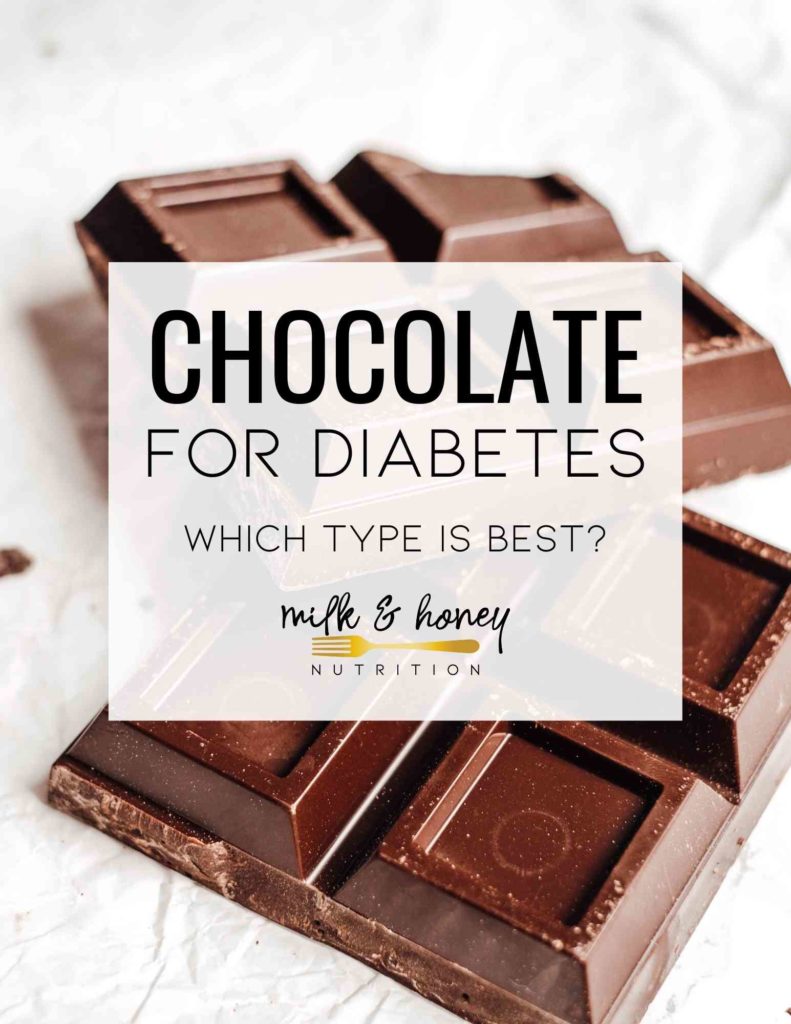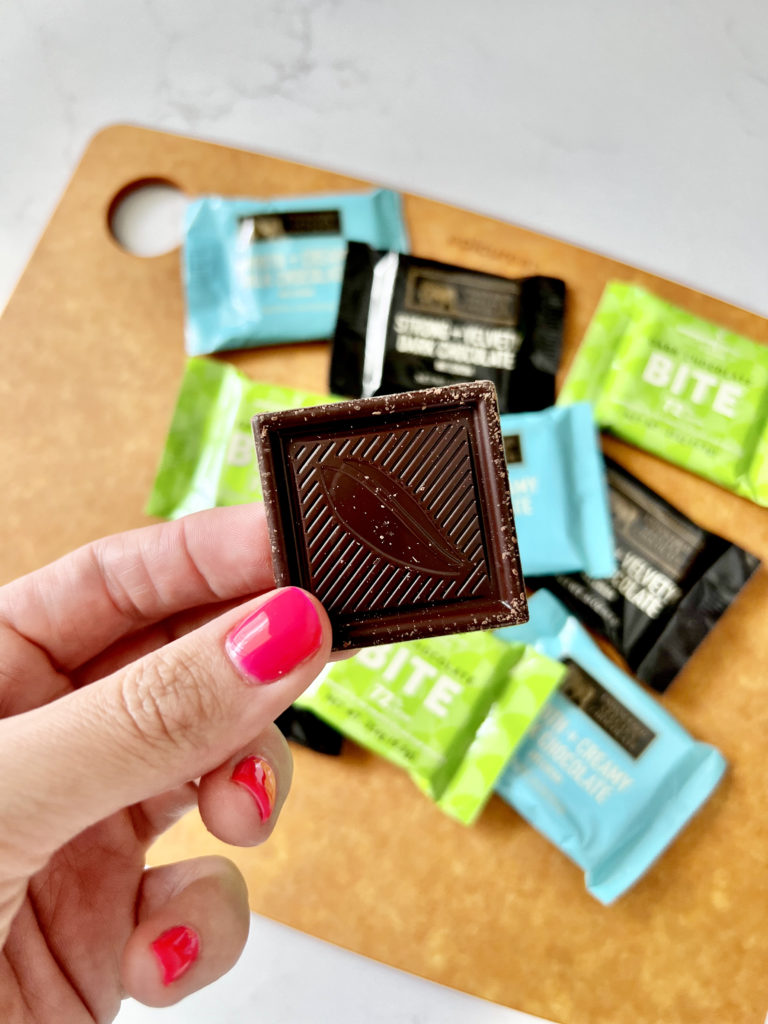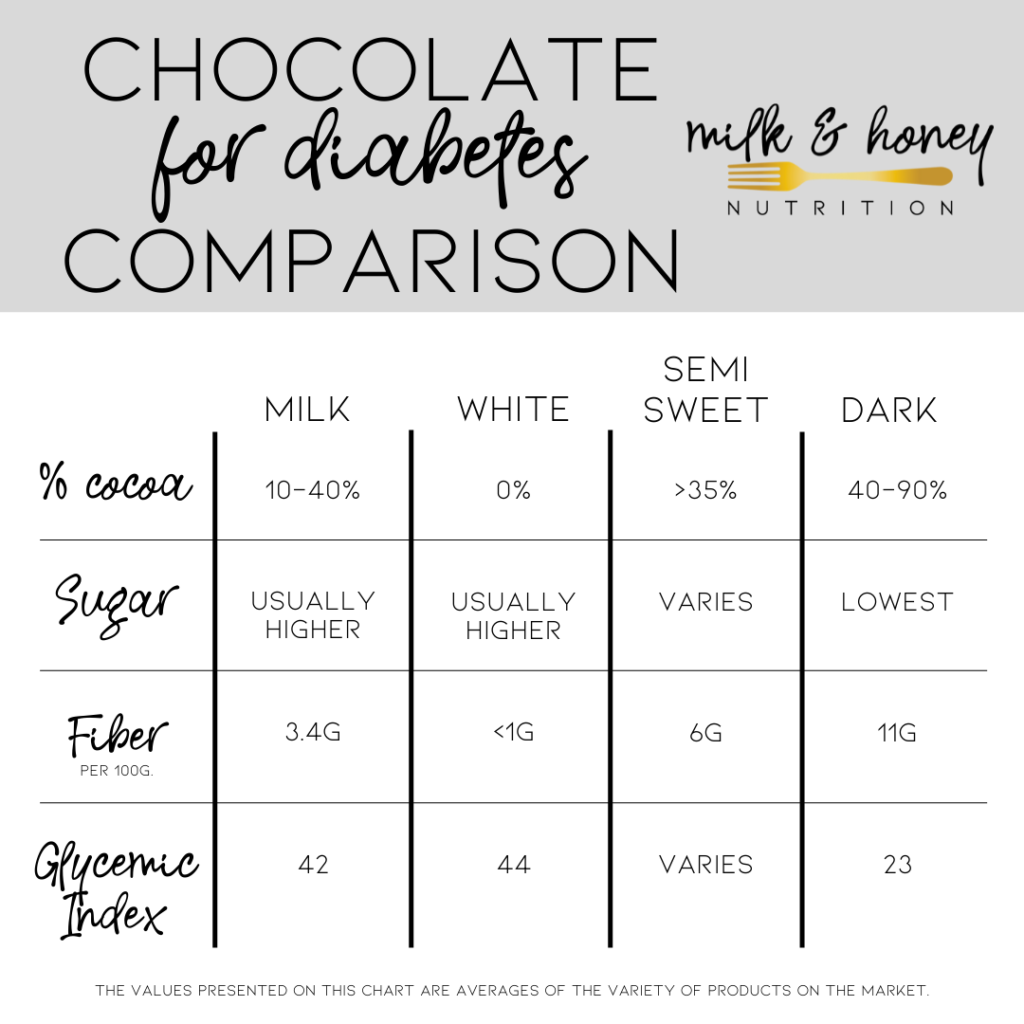
Ever wondered what the best type of chocolate for diabetes is?
In this article we’ll explore the different types chocolate and their possible health benefits. And, we’ll also look at the best types of chocolate for diabetes.
Types of chocolate
There are many types of chocolate, but for the purposes of this article, we’ll focus on the 4 main types of chocolate most of us like to snack on!
- Milk Chocolate: Milk chocolate is usually the most popular form of chocolate and contains anywhere from 10-40% cacao mixed with sugar and milk.
- Semi-Sweet Chocolate: Semi-sweet chocolate contains 35% or more cacao, and is most often used in baking.
- Dark Chocolate: Dark chocolate comes in a wide variety of ~45% cacao all the way up to 90% typically. Dark chocolate is often the type of chocolate you’ll see health benefits attributed to.
Milk chocolate for diabetes
Milk chocolate is often the most popular chocolate most of us reach for… usually because it’s the sweetest. And, while it can be a great option for a fun treat, if you’re looking to reap some health benefits from chocolate, it’s probably not the first one you’d want to reach for. Because of the added milk and sugar, the amount of cacao is lower than other forms of chocolate.
Semi-sweet chocolate and diabetes
Semi-sweet chocolate usually has just as much sugar added to it as milk chocolate and is not usually high enough in cacao % to offer the typical health benefits we attribute to chocolate. But, it is usually the best form of chocolate to bake with, so looking for a lower sugar version or one sweetened with an alternative sweetener is an option as well.
Dark chocolate and diabetes
Can people with diabetes eat dark chocolate? Absolutely, yes! And, dark chocolate is my top choice for chocolate for diabetes.
People with diabetes can enjoy any type of chocolate using the fat, fiber, and protein strategy I talk about often… but, if I had tp pick one form of chocolate for diabetes, or the most blood sugar friendly option that still tastes good, it would have to be dark chocolate!
Most of the health benefits we see attributed to chocolate are for varieties that offer 70-85% cocoa. These types of chocolate contain:
- Higher amounts of fiber
- Significant amount of micronutrients like: iron, magnesium, copper, and manganese
- Higher amounts of antioxidants
These dark chocolates with higher amounts cocoa may also provide the following health benefits if eaten in moderation:
- Improve blood pressure
- Improve blood lipid levels
- Decrease risk for heart disease
- Protect against sun damage
- Improve brain health
But, you only need a small amount (1-2oz) to potentially reap these benefits from dark chocolate.

White chocolate and diabetes
White chocolate doesn’t actually contain any cocoa. It’s made with cocoa butter, and usually has more of a vanilla taste. Much like milk chocolate, traditional white chocolate is higher in sugar.
Is sugar free chocolate okay for people with diabetes?
Chocolate labeled as sugar free may be a great option, and it may not be. It all depends on the ingredients used and the alternative sweeteners included.
Chocolate glycemic index
Believe it or not chocolate is considered a low glycemic food. This means it has a glycemic index score of 55 or less.
Dark chocolate glycemic index
Dark chocolate has a glycemic index score of 23. Because of it’s lower sugar content it does not typically raise blood sugars quickly.
How fast does chocolate raise blood sugar?
Chocolate, even milk chocolate won’t raise your blood sugar as quickly as other types of candy. This is because of the fiber (dark chocolate) and fat content.
How much does chocolate raise blood sugar?
How much chocolate can raise your blood sugar depends on the type of chocolate, how much sugar is in it, and what other foods you’re eating along with it.
Chocolate for diabetes comparison
Here’s a quick summary chart of the types of chocolate we discussed.

Some great chocolate filled recipes to try!
Make sure to try adding in some dark chocolate chips or chunks into some of these great recipes!





